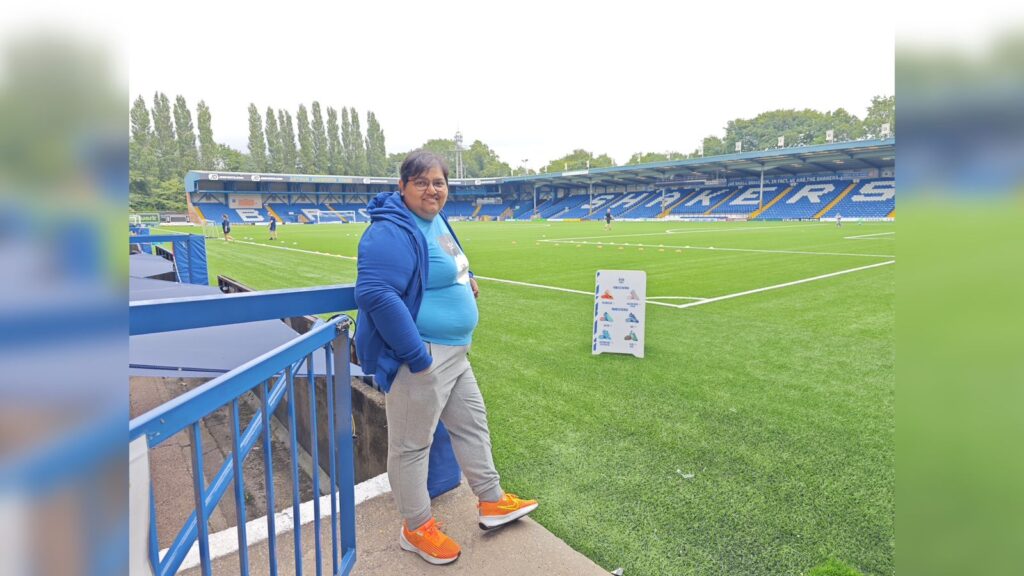
By Trisha Ghosal in Manchester
In the summer of 2019, Gigg Lane went still. Bury FC, 134 years old, beloved, broken, was expelled from the Football League. Financial mismanagement, ownership chaos, and systemic neglect left a proud football town without its heartbeat. The men’s team vanished. The stadium fell silent.
But something else quietly endured.
Between covering the India vs England men’s Test series, I travelled to Bury. It wasn’t an assignment, it was personal. Indian football icon Bhaichung Bhutia had once played here, making history in 1999 as the first Indian to sign with an English professional club. I wanted to stand where he had stood.
But when I reached Gigg Lane, I discovered something else. Something more alive than memory.
It was the story of Bury FC Women.
Formed in 1996, the women’s team had always been part of the club but never really seen as the club. When the collapse came in 2019, they too were left with nothing: no funding, no league, no pitch. Just a badge, a belief, and a refusal to vanish.
They trained on borrowed fields. Played games thanks to community goodwill. Wore the crest long after it had disappeared from official records.
Then came 24 April 2022.
For the first time since May 2019, football returned to Gigg Lane, not with a roaring men’s crowd, but with a women’s side that had never left in spirit. Bury FC Women defeated Fleetwood Town Wrens 3–0 in front of nearly 500 fans. Goals from Lucy Golding, Kimberley Tyson, and Sophie Coates brought more than just a result, they brought resurrection.
Less than a month later, they returned to Gigg Lane and clinched promotion, Tyson scoring twice to seal the Lancashire League title. In doing so, they led Bury FC back into the footballing pyramid.
While the media focused on phoenix clubs and boardroom revivals, it was these women who were already doing the work. They didn’t wait for permission. They became the return.
And here lies the truth most refuse to acknowledge:
Some of football’s greatest firsts, and most essential rebuilds, have happened holding women’s hands.
But internalised patriarchy is a powerful thing. It makes you look away. It makes you believe the story starts when the men come back. It makes you forget who held the badge when no one else did.
Even today, people continue to say women’s sport exists because of men’s sport. But Bury tells a different story. A story where a women’s team outlived the men’s side. Protected the legacy. Rebuilt the walls. And walked the club back home.
Across the world, from Lewes to Bury, women’s teams are not riding on the shoulders of men’s sport. They’re building foundations, often alone, often unpaid, often unseen. But always essential.
I came to pay tribute to a pioneering Indian footballer. I left carrying the story of a pioneering women’s team.
This isn’t just a comeback tale.
It’s a wake-up call.
It’s time people recognised this:
Some of the strongest pillars of sport have been women. And too often, history leaves them out of the frame.
But they were there, not in the background.
At the front.
Lighting the fire.
So the phoenix could rise.
Follow Revsportz for latest sports news



